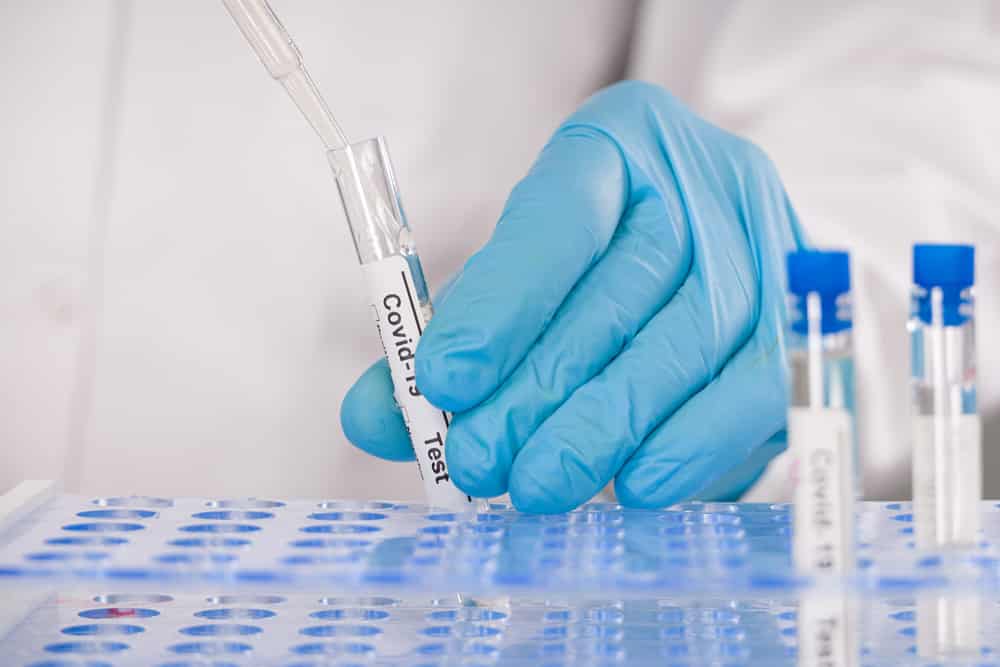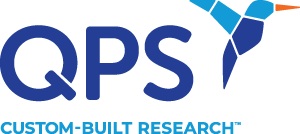The COVID-19 pandemic has been a call to arms for many of the world’s biotech and pharmaceutical companies. Although progress has been made, these companies must continue to use their top scientists, creative thinking skills, and material sources to blunt and reverse the spread of SARS-CoV-2, the virus responsible for COVID-19. This is especially important for companies in the vaccine and drug development industries, including QPS.
Leaders at QPS quickly recognized the importance of rapidly reallocating resources to combat COVID-19. They also understood that QPS would play multiple roles in the fight against the coronavirus. First, QPS would support sponsored clinical trials through its subject recruitment services and globally distributed clinics, before handing off molecular analysis to its GLP-compliant testing laboratories. Second, as an experienced CLIA testing organization, QPS would develop molecular tests for COVID-19.
In the past several months, QPS has greatly expanded its COVID-19 testing capabilities. Currently it has two molecular tests in place and is considering the development of two additional tests.

Adjusting Health & Safety Procedures
Before developing its COVID-19 testing capabilities, QPS took important steps to improve safety in its facilities. Staff members were quickly trained in the biology and epidemiology of the virus as well as the CDC-recommended health habits. Facilities were closed to visitors, modified for better airflow processing, and regularly decontaminated with hospital-grade disinfectants. As new information became available, QPS leaders shared the science and adjusted best practices.
A few QPS staff members have contracted COVID-19. In these isolated events, those individuals were quickly identified, contract tracing was completed, and further transmission did not occur within the facility. While split shift operations were necessary in the early stages of the pandemic, QPS determined it safe to return to normal daytime hours as of July 1, 2020. Those employees who are able to work remotely are still doing so, out of an abundance of caution.
Current COVID-19 Testing Capabilities
QPS is currently using two tests in the fight against COVID-19: a SARS-CoV-2 diagnostic test and a serologic test for SARS-CoV-2 antibodies. Let’s explore these tests in more detail.
The SARS-CoV-2 Diagnostic Test
The FDA-authorized QPS diagnostic test uses the Thermo-Fisher Scientific TaqPath COVID-19 Multiplex Diagnostic Solution. This qualitative test employs two kits in succession: a nucleic extraction followed by RT-qPCR. Although the preferred collection method is the nasopharyngeal (NP) swab, the oropharyngeal swab has also been validated. The test is run under GCP and CLIA governance.
Diagnostic Test Scenarios
QPS tests samples in several different scenarios, all of which are completed in accordance with CLIA standards.
First, QPS tests subject or patient samples that are part of a clinical trial and used for inclusion or exclusion. This is typically contracted by the study sponsor. Second, QPS tests samples from clinic staff to ensure that clinical test conditions do not interfere with study execution. This is contracted by either the clinic itself or the study sponsor. Finally, QPS tests samples from non-clinical commercial sites in support of workplace testing for staff surveillance and/or contact tracing that is defined and mandated by the commercial leadership.
So-called workplace diagnostic testing is interesting, as collections are performed in a non-clinical environment. QPS facilitates the process by providing necessary add-on services. These services include the following:
- Online HIPAA-compliant digital platform for the collection of protected health information (PHI)
- Approved test requisitions and consultations, as needed, with board-certified physicians for those with positive results
- NP swab kit availability and shipment to the collection site
- On-site sample collection by trained nurses.
This end-to-end service is a value-add that QPS is proud to offer.
The Use of the Diagnostic Test
The diagnostic test is designed to identify active infections in people without symptoms and to confirm the virus’s presence in people with COVID-like symptoms. The frequency of false-negative reporting is about 20 percent, and this is the result of sample collection, not shortcomings of the diagnostic test. False-negative reporting is at a minimum five to eight days after infection, making this the best point at which to make a collection.
The utility of the diagnostic test is twofold:
- First, the test helps identify infected people as soon as possible so they can self-quarantine and limit the spread of the contagion.
- Second, the test can help shorten the quarantine of previously infected or potentially infected persons. CDC guidance recommends 10 to 14 days of self-quarantine, depending upon exposure type. Two diagnostic negative results separated by 24 hours or more releases the subject from quarantine.
The Serologic Test for SARS-CoV-2 Antibodies
A proprietary test on the ELISA platform, the serologic test detects antibodies directed against SARS-CoV-2. The test is tuned to detect circulating IgG antibodies to the receptor-binding domain of the spike protein of SARS-CoV-2. For current FDA EUA guidance, the test has been evaluated for lack of cross-reactivity to common human coronaviruses 229E, NL63, OC43, and HKU1, as well as non-coronaviruses and other ubiquitous antibody-reactive or confounding states.
The estimated sensitivity of the assay, calculated as the Percent Positive Agreement (PPA), was found to be 92.4 percent. The estimated specificity of the assay, calculated as the Negative Percent Agreement (NPA), was found to be 98.0 percent. Mass-based sensitivity of the positive control was estimated 285 nanogram per ml. The test can be used qualitatively or quasi-quantitatively by using a secondary tighter evaluation.
The qualitative IgG serologic test has been submitted to the FDA for EUA approval. It is currently available to GCP and will be available to CLIA upon EUA approval. An IgM direct test is under evaluation at this time.
The Use of the Serologic Test
IgG sero-positivity reaches a maximum among infected people about 14 days after infection. It is an indication of prior SARS-CoV-2 infection. It is very specific, and it is not an indicator of current infection.
Our state of understanding at this time is that SARS-CoV-2 sero-positivity follows infection. It is further understood that sero-positivity supports a condition in which the subject is unlikely to be reinfected and become viremic if re-exposed to the virus. This protected state has been shown to last for three months after the initial infection; it’s debated how much longer it might last past that.
Combining the Diagnostic and Serologic Tests
Taken together, the diagnostic and serologic tests can be used for the following:
- They can test subject or patient samples that are part of clinical trials and used for inclusion or exclusion. This is completed to CLIA standards and contracted by the study sponsor.
- They can assist with characterizing or better understanding a clinical trial patient population or to assess the impact of COVID-19 on study results. This is likely a GCP laboratory endeavor.
- They can test samples from non-clinical commercial sites in support of workplace testing for staff, perhaps as part of a return-t0-work initiative that is defined and mandated by commercial leadership. However, this prospect presents many concerns and should currently be taken with a grain of salt. Scientists are not 100 percent certain of the value of COVID-19 protective antibodies at this time.
Possible COVID-19 Tests for the Future
The following two tests may be developed by QPS in the future, pending client interest and a viable market.
A Quantitative SARS-CoV-2 Genomic Test
Like the serologic test, this would be a proprietary test designed and built by the same QPS team that engineers all of the company’s custom qPCR assays. The intent would be to provide a test for viral load studies as part of clinical trials for COVID-19 therapies.
An Idiopathic Upper-Respiratory Infection Test
This would be a qualitative, multiplex qPCR for more than 20 viruses and bacteria common during flu season, including the flu, SARS-CoV-2, and the common coronaviruses. The targets were chosen specifically for a lack of symptomatic identification during presentation. The intent would be to separate SARS-CoV-2 patients and anxiety from the regular repertoire of cold and flu agents.
_____
QPS has adjusted and improved its processes and protocols to ensure that staff stay healthy and labs remaining operating at 100-percent efficiency and capacity. In addition, QPS has developed and is running multiple SARS-CoV-2 tests in support of the global efforts to control the pandemic.
Interested in learning more about QPS COVID-19 testing capabilities? This topic was recently discussed by John Kolman, the Vice President of Translational Medicine at QPS, in a webinar. To view that presentation, please visit our Videos/Webinars page and click the video labeled “QPS COVID-19 Testing Capabilities.”
Are you looking for a CRO to assist with your preclinical or clinical drug development related to the novel coronavirus or COVID-19? QPS has CLIA-certified and GLP-compliant laboratories ready to fast-track your novel coronavirus and COVID-19 RT-qPCR/QPCR and Serological Assays and vaccine development programs. Since 1995, QPS has provided discovery, preclinical, and clinical drug development services. An award-winning leader focused on bioanalytics and clinical trials, QPS is known for proven quality standards, technical expertise, a flexible approach to research, client satisfaction, and turnkey laboratories and facilities. For more information, visit www.qps.com/coronavirus or email [email protected].




